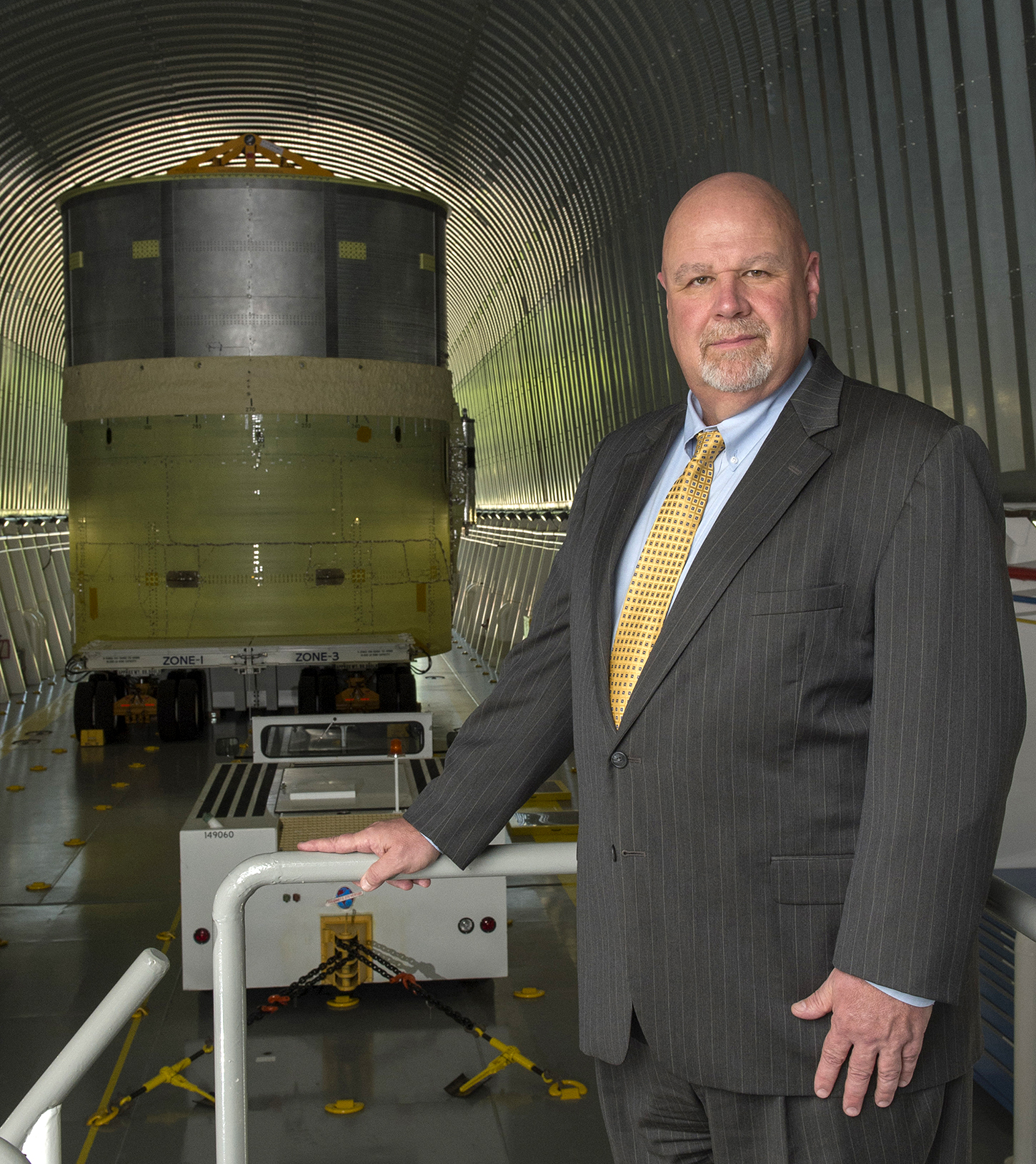Large endeavors are not accomplished alone. John Honeycutt, program manager of NASA’s Space Launch System (SLS) rocket, often compares building his own house to leading his team that has built the world’s most powerful rocket, which will return astronauts to the Moon on the Artemis missions.
“To build a good house and a Moon rocket, you must first build good relationships,” said Honeycutt. “When I built my house, I did a lot of the work myself, but I subcontracted a lot of it out, too. For the contractors that worked on my house, it helped to have a strong relationship with them.”

He used this same principle to build the team that has taken the SLS rocket from design to production, and now to the upcoming launch of the first Artemis mission. Over the years, the SLS team has involved 1,100 suppliers in 48 states including Alabama where Honeycutt grew up. His father was a mechanical engineer who was a metals expert for the Army and NASA in Huntsville, Alabama, also called the Rocket City.
Honeycutt followed in his father’s footsteps, earning a degree in mechanical engineering from the University of Alabama in Huntsville. Through much of his college life, he worked various jobs, including managing a small grocery store, fixing cars, managing a gas station, and working in a mom-and-pop hardware store in nearby Madison. That mix of jobs along with his education gave him two important skills that he still uses to manage one of NASA’s most important programs: mechanical engineering know-how and people skills from working with the public.
At his first job with Rockwell International, Honeycutt worked on environmental and structural testing as part of developing the International Space Station, as well as the main propulsion system, external tank, and launch support for the Space Shuttle Program.
“The job gave me a broad base of experience and taught me the importance and the rigor required to design and test hardware for human spaceflight,” he says. “It instilled in me the attention to detail required to design large, complicated systems that must operate to keep crews safe and make bold space missions successful.”

Honeycutt brought this philosophy with him when he joined NASA nine years later. He was the manager for the space shuttle’s external tank, and he served in many SLS positions before being named SLS program manager in October 2015. He describes the rocket’s early days of development as challenging, not just in designing and building the hardware, but also building the systems, facilities, and talent to evolve the program from a focus on design and development to a production and operations environment.
“The Space Launch System was the first big rocket to undergo the design and review process since the shuttle days,” Honeycutt said. “You had new faces and new players, probably more so than experienced people. Even though we had some proven hardware from the shuttle, that hardware presented some unique challenges because now it had work on a different rocket for a totally different types of missions beyond low-Earth orbit. It wasn’t just a plug-and-play.”
It is not just building the parts of the rocket that is challenging. The SLS team collaborates with the Orion Program and Exploration Ground Systems Program to get the rocket ready to launch, an endeavor that involves stacking the boosters and core stage on the mobile launcher, connecting the upper stage with the Orion spacecraft, and ensuring all systems are “go for launch.” Like the often-invisible work required to make a house a livable home, the systems must all work together.
“There’s a huge integration piece to make the Artemis missions successful that involves not only hardware and software, but also and, perhaps most importantly, people and processes. As the program has evolved, we’ve built a strong leadership team,” Honeycutt says. “We’ve got everybody pushing in the same direction toward launch of the first Artemis mission to the Moon, which is what we want. You don’t get there without building strong relationships from the very beginning. The payoff is seeing that rocket soar off the pad and launch a new era of deep space exploration.”
For more information on SLS visit:






















